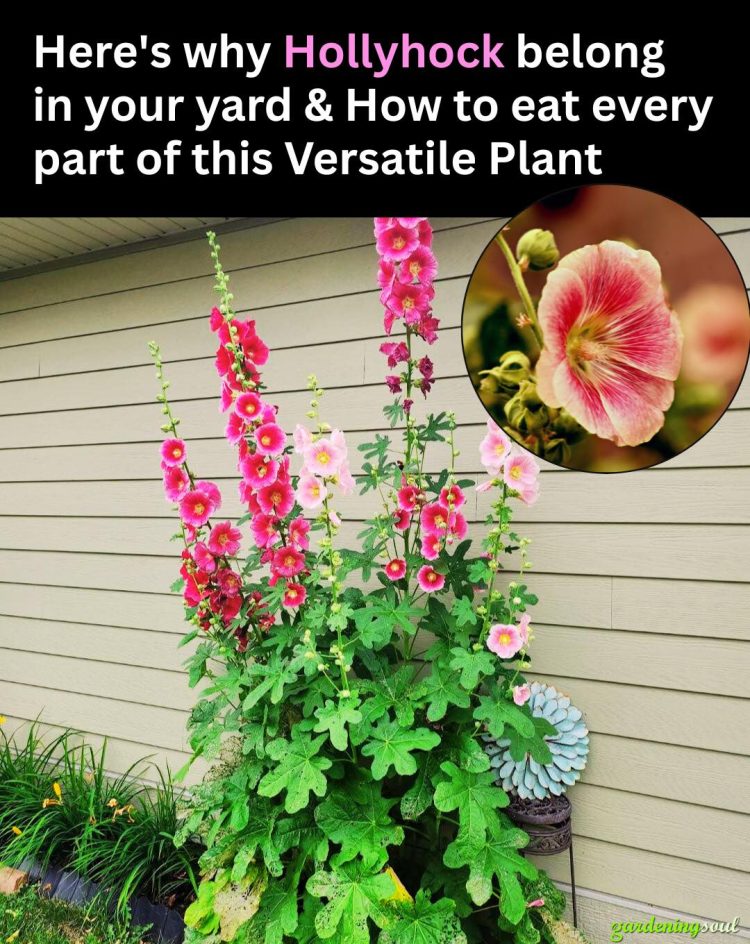In a world where beauty and utility rarely go hand in hand, the humble hollyhock (Alcea rosea) proves to be a glorious exception.
Towering up to 8 feet tall with vibrant, show-stopping blooms in pink, purple, white, red, and even black, hollyhocks are often grown as classic cottage garden favorites – but there’s so much more to this striking plant than meets the eye.
Did you know that every part of the hollyhock is edible? Or that it has a long history of medicinal and culinary use stretching back centuries?
If you’re looking to grow a plant that’s beautiful, easy to maintain, pollinator-friendly, and entirely usable, hollyhocks should be on your must-plant list.
This article will explore:
Why hollyhocks are perfect for your garden
Their powerful benefits for pollinators and soil
The edible and medicinal uses of hollyhock flowers, leaves, seeds, and roots
How to grow and harvest them successfully
Safety, precautions, and creative ways to cook with hollyhocks
What Are Hollyhocks?
Hollyhocks (Alcea spp.) are tall, biennial or short-lived perennial plants in the mallow family (Malvaceae).
Related to hibiscus, okra, and marshmallow root, they have long been valued in traditional herbalism and ornamental gardening.
Key Characteristics:
Grows 6–8 feet tall
Produces towering spires of large, colorful blossoms
Thrives in full sun with well-drained soil
Blooms from mid-summer through early fall
Attracts bees, butterflies, and hummingbirds
Hollyhocks are often grown along fences, walls, or garden borders to provide vertical interest and a touch of old-world charm.
7 Compelling Reasons to Grow Hollyhocks in Your Garden
1. They’re Stunning Statement Plants
Few flowers match the dramatic presence of hollyhocks. Their vertical spikes burst with dozens of vibrant blossoms, creating a lush, romantic feel.
Whether you plant them as a backdrop or as a focal point, they’re sure to turn heads.
2. They Attract Pollinators
Hollyhocks are rich in nectar and pollen, attracting:
Bees
Butterflies
Hummingbirds
Beneficial insects
By growing hollyhocks, you’re supporting biodiversity and helping essential pollinators thrive in your garden.
3. They’re Surprisingly Easy to Grow
Despite their dramatic appearance, hollyhocks are hardy and low-maintenance. Once established, they need little care beyond watering and occasional staking.
4. They Self-Seed and Naturalize
Hollyhocks readily self-sow, meaning once you plant them, they’ll likely return year after year – even though they’re technically biennials. Let a few seed heads mature and drop, and you’ll enjoy a continuous display.
5. They’re Edible and Medicinal
Every part of the hollyhock plant is usable – flowers, leaves, seeds, and roots. More on this below.
6. They Improve Soil Structure
Hollyhocks have a deep taproot system that helps:
Break up compacted soil
Improve drainage
Access nutrients from deeper layers
They’re perfect for restoring neglected garden beds or enriching depleted soil.
7. They Pair Beautifully With Other Plants
Plant hollyhocks with:
Coneflowers
Black-eyed Susans
Lavender
Foxgloves
Delphiniums
They create magical color combinations and layered textures in mixed borders.
see continuation on next page
